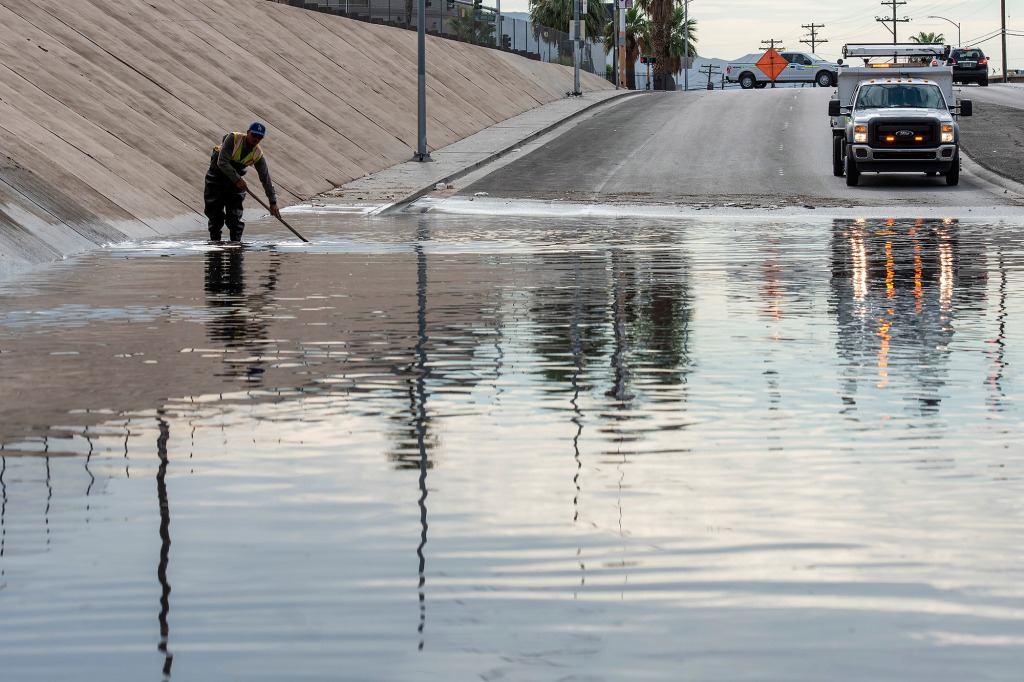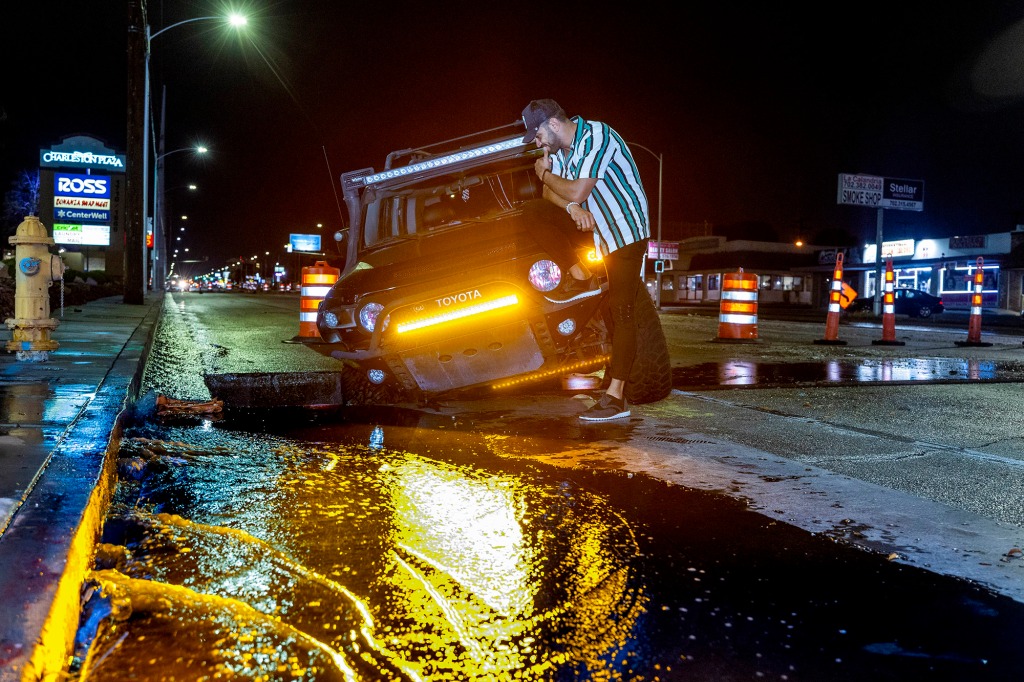Why flash flooding in Las Vegas is historically bad
The torrential flooding that has slammed Las Vegas in recent weeks is historically bad because it came on the heels of an extreme drought that made the ground less absorbent, a meteorologist said Friday.
Sin City — which was hit Thursday by a second flash flood in two weeks — was suffering from dryer-than-usual landscape when the heavy rain struck, Fox Weather Meteorologist Stephanie Van Oppen told The Post.
“After long periods of drought, the ground shrivels up and makes it harder for water to absorb into it,” said Van Oppen. “In the city, there’s also less vegetation to absorb the rain.”
Las Vegas was placed in “extreme drought” status on May 31 — and months of the earth-scorching weather compounded the flooding that swamped the city’s world-famous Strip this week, she said.
The double-whammy of drought and downpour may have also been worsened by the fact that desert cities often “don’t build sewer systems equipped for that much rain,” she said.

Summer is Las Vegas’ normal monsoon season — but the city has been pelted by high rainfall levels of 1.3 inches since June 15, Van Oppen said.
By contrast, the average rainfall for the Sin City’s entire summer monsoon season is 1.03 inches.
“It’s the wettest monsoon since 1999,” Van Oppen said.

On Thursday, the city’s entire Strip suffered major water damage as jaw-dropping videos showed rain pouring into casinos and turning parking garages into rivers.
Iconic casinos and hotels on the Strip were also flooded on July 29 as the city put a severe thunderstorm warning in place.
Read the full article Here


